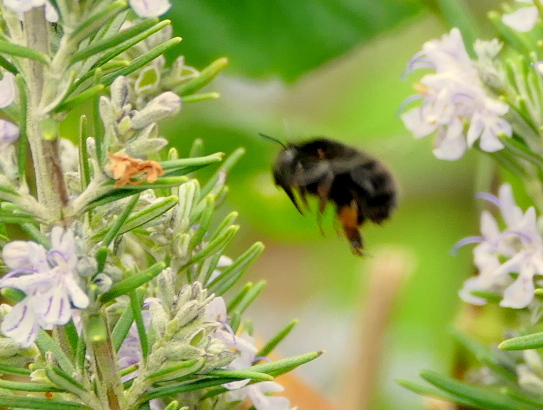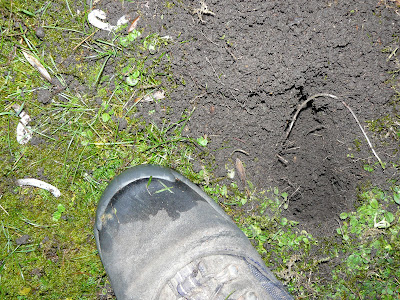What a fine bird, that really went at it to dig up the lawn for ants.
POW!!! The camera was focused but the bird was hammering too fast for the shutter speed on this dark afternoon.
Another "woodland" bird that, like the Green woodpecker, is increasingly moving into the urban environment is the Jay. This garden in Surrey is surrounded by mature oak trees, so is perfect for Jays, which thrive here. Apart from a reputation of taking young birds, Jays will eat a host of invertebrates, including so-called pests.
If there was ever a case for enjoying a mossy, weedy lawn, then the joy of having such (normally woodland) birds in your garden is a powerful reason, in my opinion. And to add to it one should include the butterflies and other insects attracted by wild flowers in a lawn.
Since posting this blog entry my own garden has developed over the decades into a wonderfully diverse nature reserve. Some of my observations are collated in an animated talk, released in 2018 at http://www.peterlovetttalks.co.uk/page19.html The evolution of a formal garden to a nature reserve









No comments:
Post a Comment